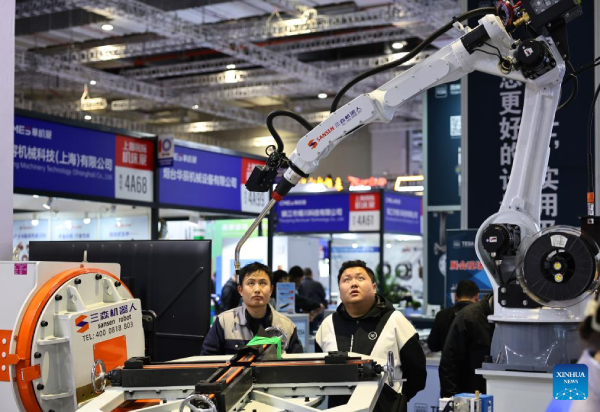Introduction
Over the past two decades, Chinese tech companies have undergone a dramatic transformation, evolving from imitators of Western technology into innovative global players reshaping the digital world. This ascent is not accidental but the result of a comprehensive national strategy, combining massive government support, a vast domestic market, and a dynamic entrepreneurial culture. In this article, we explore the stages of rise, major companies, areas of strength, global expansion strategies, challenges, and future prospects.
1. Foundations of China’s Tech Boom
1.1 Massive Domestic Market
With over 1.4 billion people, China has the largest digital user base globally.
This provided an ideal environment for testing and developing e-commerce, digital payment, and AI-based services.
1.2 Government Investment in Innovation
China’s spending on research and development (R&D) exceeded 3% of GDP by 2024.
National programs such as “Made in China 2025” and the Digital China initiative fueled growth in high-tech industries.
Creation of mega-funds to support sectors like AI, semiconductors, and 5G.
1.3 Market Protection and Tech Giants Development
Restrictions on foreign platforms (e.g., Google, Facebook) gave local firms space to grow without direct global competition.
Resulted in the emergence of major players:
Alibaba – e-commerce and cloud services
Tencent – gaming, fintech, and social media (WeChat)
Huawei – telecom, smartphones, and 5G infrastructure
2. Key Areas of Technological Strength
2.1 Telecommunications and Digital Infrastructure
Huawei and ZTE led the global deployment of 5G networks, dominating 35%+ of global 5G patents.
Investments in fiber optics, data centers, and mobile technology strengthened China’s infrastructure.
2.2 Artificial Intelligence (AI)
AI applied in facial recognition, smart surveillance, digital commerce, healthcare.
China aims to become the global AI leader by 2030.
Leading AI firms: SenseTime, Megvii, iFlytek.
2.3 E-Commerce and Digital Payments
Alibaba, JD.com, Pinduoduo lead domestic and international e-commerce.
Over 90% of transactions in China are digital, via Alipay and WeChat Pay.
Expansion through AliExpress, Lazada, and strategic investments.
2.4 Electric Vehicles (EVs) and Green Tech
Companies like BYD, NIO, XPeng challenge Tesla globally.
China leads in battery production, EV adoption, and green tech innovation.
2.5 Cloud Computing and Big Data
Alibaba Cloud and Tencent Cloud rank among the world’s top cloud providers.
Massive growth in big data analytics, supporting finance, healthcare, and security.
3. Global Expansion Strategies
3.1 Overseas Acquisitions and Investments
Chinese firms acquired or invested in major brands:
Lenovo acquired IBM’s PC division.
Tencent holds stakes in U.S. game firms like Riot Games.
BYD exports EVs globally, expanding in Europe and Latin America.
3.2 Focus on Emerging Markets
Strong presence in Asia, Africa, and Latin America with affordable smartphones and tech.
Brands like Xiaomi, Oppo, Vivo dominate in price-sensitive markets.
3.3 Digital Belt and Road Initiative
Expansion of digital infrastructure (fiber optics, data centers, 5G towers) in BRI countries.
Facilitating tech exports, financing, and digital influence across developing regions.
4. Global Challenges and Constraints
4.1 Geopolitical Tensions and U.S. Sanctions
U.S. imposed export controls on advanced semiconductors and tech tools.
Firms like Huawei blacklisted, limiting global operations.
Tech war with the West threatens supply chains and market access.
4.2 Data Privacy and Cybersecurity Concerns
Allegations of state surveillance through Chinese technology raised alarms in the West.
Restrictions on Huawei, ZTE, TikTok in multiple countries.
Debate over digital sovereignty and tech ethics continues.
4.3 Dependence on Foreign Technology
China still relies on imported high-end semiconductors.
National push for self-reliance in chip design and manufacturing.
5. Future Outlook – Where Are Chinese Tech Giants Headed?
5.1 Strengthening Original Innovation
Moving from “copying” to inventing and leading in core technologies.
Investment in basic research, top universities, and entrepreneurship.
5.2 Focus on Emerging Tech Frontiers
Massive funding in AI, 6G, quantum computing, renewable energy.
Preparing for metaverse, augmented reality, smart robotics.
5.3 Competing for Global Tech Leadership
China’s ambition: to be a global innovation hub by 2035.
Balancing domestic regulation (anti-monopoly, data protection) with global expansion.
Conclusion
The global ascent of Chinese tech firms marks a tectonic shift in the global digital landscape. These companies are not just followers but increasingly innovators and leaders, shaping the future of technology across multiple domains. Despite geopolitical headwinds and regulatory scrutiny, their ability to innovate, adapt, and expand positions them as pivotal players in the 21st-century tech economy.








